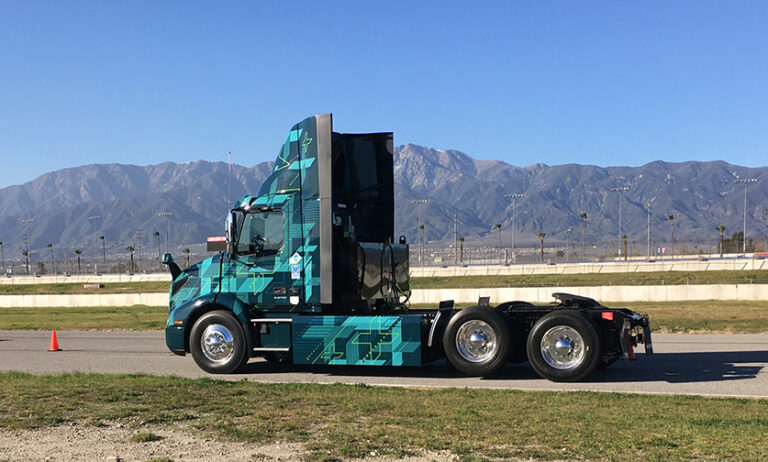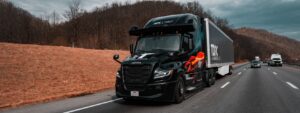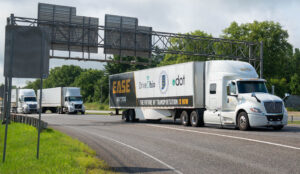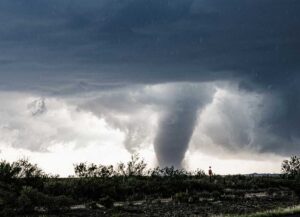FONTANA, Calif. — The Los Angeles area, particularly Orange County and communities between the Pacific Coast and Little San Bernardino Mountains, is notorious for poor air quality. The area is often mentioned as having the worst air quality of any location in the United States and sometimes the world. But steps to improve the region’s long-polluted air are moving forward, and public health, the climate, traffic congestion, traveler experiences, and job training and placement are receiving the benefits.
On Feb. 11, Volvo Trucks chose Fontana, California, to unveil its efforts to reduce the trucking industry’s contribution to air pollution. The Volvo LIGHTS project was presented to 250
attendees at the main offices of TEC Equipment, one of the largest Volvo dealerships in the country. Auto Club Speedway served as the program’s official introduction.
Volvo LIGHTS (LIGHTS being an anacronym for “low impact green truck solutions”) is a demonstration program being conducted in the South Coast Air Quality Management District (AQMD) to determine the feasibility of converting gasoline and diesel-powered trucks to battery electric vehicles. While the project may seem to be a truck manufacturer-led effort, the considerations when developing such vehicles go far beyond simply building a truck. For that reason, AQMD, recipient of a $45 million grant to conduct the project, is partnering with Volvo and 14 area
organizations including businesses, colleges, public-health advocates, and other stakeholders to turn what many consider a long-coming dream into reality. Working with Dependable Highway Express (DHE), a regional carrier, the partners will determine the many factors to be considered in converting a fleet to battery electric power. The list of considerations is long, and as research moves forward many more will likely be added. In the words of several partners, “We don’t have all the answers yet.”
The project is focusing on four aspects of transitioning the trucking industry to alternative energy programs. For the time being, in working with DHE, the focus is on improving the battery-powered range for local and regional vehicles and transporters. At some point in the future, project leaders expect Class 8 trucks for OTR use to be manufactured and tested. The OTR market, however, will not move to production until as much as possible can be learned from the Volvo LIGHTS project.
From the standpoint of Volvo and future truck manufacturers using alternative energy sources, focus areas include testing existing vehicle technologies and adjusting based on data collected, increasing the charging infrastructure and providing sales and service support. If any of the three fails to keep up with the others, the entire project will be delayed, as will expanding the use of battery electric vehicles in larger truck classes and geographic areas.
When DHE begins utilizing Volvo’s trucks, monitoring and adjusting to data received will be a high-tech process. The information obtained will be analyzed in algorithms related to the charge-distance ratio and the impact of time of day, topography and driver patterns. With those results in hand, researchers will then recommend and implement improvements. Efforts will focus on optimizing energy usage and range; developing web-based tools to improve “uptime” and maximize range; increasing existing battery densities (the amount of power the battery stores) by at least 20%; and testing multiple truck configurations.
Without the ability to access charging stations when needed, a battery electric vehicle can be stranded, delaying deliveries and cutting into carrier profits. As part of the Volvo LIGHTS program, partners will work to increase the number of charging stations in the project area. Intended infrastructure development includes public and private electric chargers, including one of the nation’s first publicly accessible fast-charging truck stations. The stations will be networked to vehicle telematics so researchers can isolate data on specific vehicles and compare their operation to others in the program. Increasing the capabilities of charging stations will require on-site solar panels to reduce grid impacts, as well as additional research into methods of storing energy. Since most truck operation will occur in daylight hours when energy is being collected (in solar applications), a significant increase to storage capacity will be a priority. Also, researchers will study the use of second-life batteries and how they may offset operations costs.
With all the technology in place and all systems ticking, Volvo LIGHTS and its partners know that it is the human aspect of the project that will lead to its success or failure. Being able to meet consumer needs in a timely and efficient manner will depend on sales and service, both controlled by the human element. Volvo is committed to providing sales and service support for those interested in adding LIGHTS trucks to their fleets, and they will offer leasing options allowing carriers to test performance for unique applications prior to committing to a purchase. Likewise, as the technology is new and continuing to develop, two colleges within the testing area are training students in battery-electric vehicle repair and servicing using reality-based training.
While Volvo LIGHTS has just been unveiled, many components are in place and partners are prepared to perform their roles. To date, Volvo has manufactured 23 heavy duty battery electric trucks and 29 pieces of warehouse equipment (i.e., forklifts); 58 public and private chargers are in place; two after-market service centers are operational; and colleges have announced training programs are full through the end of 2020. Two ports (Los Angeles and Long Beach) are providing infrastructure planning. Add in the ability to generate solar energy up to 1.8 million kilowatt hours per day, and the project is off to a running start.
The goals of the Volvo LIGHTS project are not only to decrease costs for carriers and increase efficiencies. Improving air quality and the health of at-risk residents of Southern California will be the project’s true measure of success.
Since retiring from a career as an outdoor recreation professional from the State of Arkansas, Kris Rutherford has worked as a freelance writer and, with his wife, owns and publishes a small Northeast Texas newspaper, The Roxton Progress. Kris has worked as a ghostwriter and editor and has authored seven books of his own. He became interested in the trucking industry as a child in the 1970s when his family traveled the interstates twice a year between their home in Maine and their native Texas. He has been a classic country music enthusiast since the age of nine when he developed a special interest in trucking songs.








